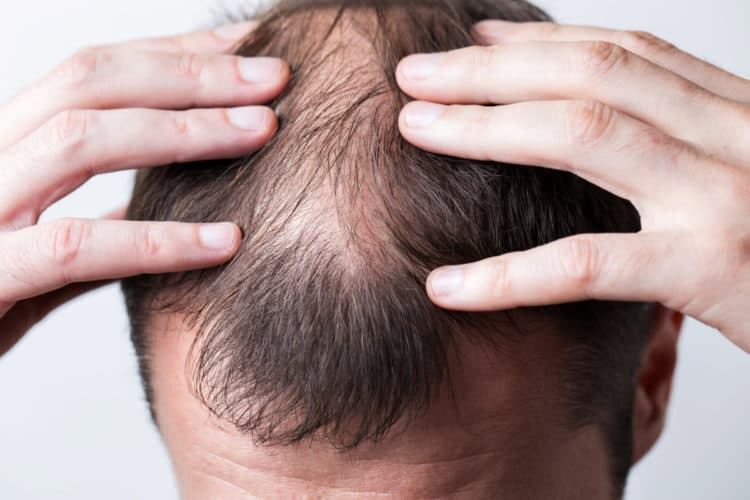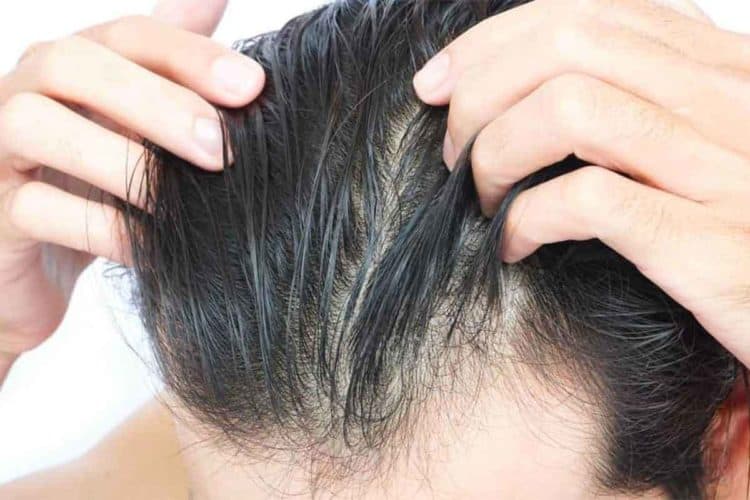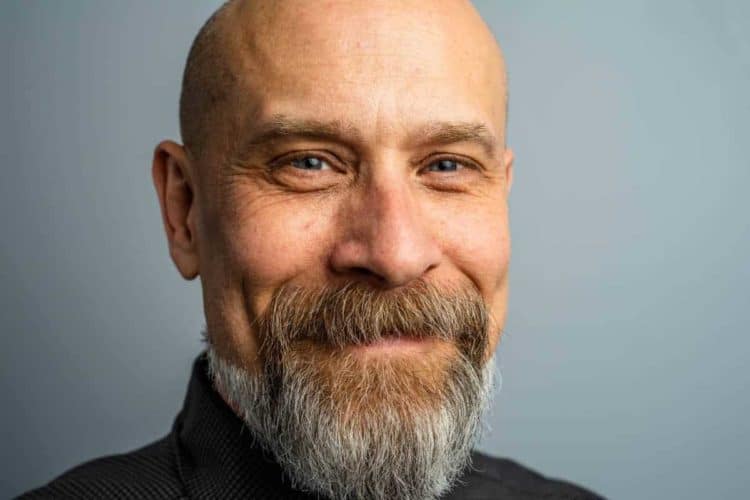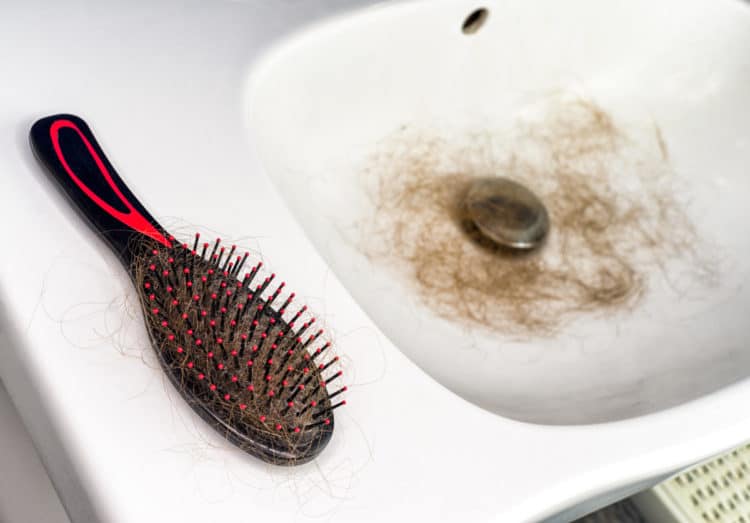Are you seeing the signs of hair loss? This is a conversation that no one wants to have, but when you see your hair thinning, you may be in the early stages of male pattern baldness.
When balding starts, many men fear they’ll be completely bald in a matter of months, but that’s not always the case. Although the early signs of balding are distinct from male pattern hair loss, your characteristics may just be a maturing hairline or temporary stress causing extra shedding.
So when should you take action? These early signs reveal what may be stressing your scalp and what you can do now to treat the problem. Continue reading.
What’s Causes Balding?
There are several types of hair loss, the most common is androgenic alopecia. It’s a genetic condition found in both men and women. In men, it’s called male pattern baldness and in women female pattern baldness, respectively.
It starts with a receding hairline or an M-shaped hairline. Then the gradual shedding of hair on top and temples. Then to thin hair or bald spots. Check your current stage of hair loss on the Norwood Scale.
Other factors that contribute to hair loss:
- Heredity
- Alopecia areata
- Hormonal changes
- Medical conditions
- Medications
- Over-the-counter supplements
- Cranial radiation
- Hair treatments
- Stress
How Long Does it Take to Go Bald?
This is a difficult question to answer, as the severity of baldness will vary with each person. So, it will depend on each person’s unique set of circumstances.
Typically, men with male pattern baldness can start losing hair in their 20s and shed hair over 15-25 years until bald. However, in some extreme cases, men have gone bald in less than 5 years, but that’s rare.
What Are the Signs of Male Pattern Baldness?
Even though men can look really good bald, many fear the change.
A recent study revealed 9 out of 10 men say balding is something they think about every day.
Many of these men are in denial and don’t act to prevent further hair loss. That’s a shame! According to dermatologists, you can prevent further shedding when you see the early signs of male pattern baldness.

1. My Hair is Falling Out
Going bald young may be a problem if it’s in your genes. That’s the worst part about balding, so we’ll start here. While it’s self-explanatory, you know your hair is falling out more frequently.
While research shows losing 100 strands a day is normal, anything beyond that, such as clumps falling out in the shower or significant patches of missing hair at the crown of your head, isn’t.

What’s the difference between normal and male pattern baldness?
Rapid shedding
As seen on your pillow, in the shower, around the sink, etc
Patches of bare scalp
You can feel patches of scalp with very little to no hair
Thinning
Hair at the top of head, crown and back of head are thinning
If you’re experiencing these issues, then you should seek hair loss treatment soon.
While stress could play a factor, a blood test may show anemia or mild vitamin deficiencies affecting your hair health. Finally, if it’s pattern baldness, you could prevent further hair loss with a DHT blocker.
2. My Scalp Itches
An itchy scalp can stress hair follicles and weaken hair roots, causing unwanted hair loss. Also, if you have dandruff, your hair may be shedding if you scratch and pick at your scalp.
This doesn’t always mean you’re on a path to pattern hair loss. For example, you could have a dermatological problem, such as dermatitis or psoriasis.
Dandruff
While dandruff plays another role in deteriorating your follicles and causing issues, it’s the actual itching, rubbing, scratching, and peeling that causes further harm.
Improve Your Diet
If you want to get rid of chronic dry scalp, you may have to change your diet. Simple carbohydrates and refined sugars cause dandruff and dry scalp to get worse.

Hair Care: Fortify Your Hair and Scalp
You can also look for hair masks, medicated shampoos with zinc and hair loss shampoos as options.
The good news is that once you cure the itch and dry scalp, you likely will see a resurgence in hair growth as your follicles return to normal.
3. My Hairline is Receding or My Hairline Looks Like an M Shape
If your hairline is receding, you know it. However, you could just be maturing if you’re entering your late 20s or 30s. Men typically have a juvenile hairline up until the age of 28 to 30. This hairline is typically thick and typically straight across the top of your forehead.

As your hairline matures, you’ll notice an indent at the corners of your forehead and temples. This is your mature hairline forming as you age and it’s totally normal.
However, if your hairline is moving back farther and farther, then you may notice more skin at the top of your forehead. You may notice thinning hair or it doesn’t grow as thick around the edges. Ultimately, a “V” or “M” will form.
This pattern may spread with male pattern hair loss. In this form of alopecia, you’ll lose more hair at the corners, and it may lead to the loss of a hairline completely. You can prevent this with medications containing finasteride such as Propecia. These are DHT blockers that can prevent your follicle from dying, but may have side effects.
4. I Can See My Scalp Showing
Did you used to have thick hair that covered every inch of your head? When you run your hands to the back of your head, do you notice areas where your fingers touch bare skin?
If you notice bald patches, it’s not too late to stop the hair loss. Otherwise, you may also notice your scalp gets sunburnt easily, and you need to wear sunscreen in these areas.

There are certain creams containing Rogaine, or finasteride, that can help regrow lost hair. Along with these treatments, you may also need to take vitamins like B3 and B7 (biotin), vitamin A, and vitamin D to strengthen your hair.
5. My Mom’s Dad is Bald. Does That Mean I’ll Be Bald?
Male pattern baldness is hereditary. Some research has shown you can look at your mother’s side to see if baldness will be passed down to you. The primary gene for balding is the X chromosome, and it’s more dominant on the mother’s side.
However, unless you have bald grandparents on both sides, you may prevent male pattern hair loss by taking care of your iron, zinc, biotin, vitamin D, and vitamin E levels when you’re young.

Some studies have also shown wearing a cap or hat all the time can exacerbate dandruff, scalp infections, and dry scalp. It’s best to avoid stressing your hair as much as possible and taking care of your diet early on if you know there’s a chance baldness runs in the family.
6. I Use Gel and Hairspray. Are They Causing Me to Go Bald?
Hair styling products like gel and hairspray don’t cause balding, but certain formulas may exacerbate a dry scalp or cause more problems. For example, they found sulfates to irritate hair follicles. Also, shampoos with formaldehyde proved to cause additional problems when used too frequently.
However, if you use teasing combs or heating tools, you could speed up the process, too. If blow drying, consider cutting back and allowing your hair to dry naturally. Also consider using combs and brushes that don’t pull at your hair or cause breakage.
7. I’m Getting Older and My Hair is Falling Out
Baldness isn’t exclusive to older men. Studies have shown men in their 20s and 30s experience a receding hairline and even baldness.
The real problem is with the amount of DHT your body is producing. If you have an over-production of DHT, then it’s likely attaching to your hair follicles, causing your pattern hair loss.

DHT Affecting Your Hair
DHT is a male sex hormone also called an androgen, naturally made in the body as a byproduct of testosterone. When testosterone converts to DHT, it can attach via oil glands on the scalp and block your hair follicles. This causes the follicle to dry up and essentially close.
While finasteride products can block DHT formation, you may also regrow hair in areas where it was previously missing.
DHT sensitivity can strike early in teenagers if it’s hereditary. However, baldness typically won’t happen overnight. You’ll likely see a gradual loss of hair leading to baldness in certain areas over five years.
If You’re Seeing Early Signs of Balding – Act Now!
Along with changing your diet away from refined sugars and carbohydrates, also engage in an active exercise routine outside where you can get some natural vitamin D.
You can still prevent more hair from falling out. Seek medical advice to explore options like medication, laser hair treatment, or hair transplants. We hope you get help sooner than later, as being proactive is the best way to avoid total baldness in later years.


